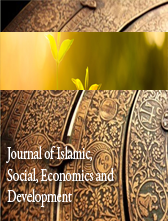THE POTENTIAL OF SUPPORTIVE REMEDIAL ENVIRONMENT FOR STROKE RECOVERY FACILITIES
Abstract
Stroke recovery facilities are significant segment in the general consideration of stroke patients. The nature of stroke is seen as an ailment that causes an entire scope of physical, mental and emotional unsettling influences. Due to this, recovery facilities design should consider the social mental needs of the stroke survivors other than centering the recuperation of their physical capacities. Therefore, this study aims to investigate the potential of supportive remedial environment as a recuperating apparatus to support better passionate and physical wellbeing recuperation of stroke survivors. A mixed methodology was adapted, which included questionnaire surveys and a semi-structured interview with the three rehabilitation health professionals and thirty respondents who are either the patients or relatives of the patients who received treatment at the rehabilitation centre. The semi-structured interviews were analysed using the content analysis method. Meanwhile, the questionnaire surveys were analysed using descriptive analysis. This study has identified that the major limitations of the current rehabilitation facilities were the absence of inpatient facilities, lack of social spaces as well as insufficient of space for various activities conducted. Due to this, such issues need an attention to be solved by the architects in designing the area with healing environment, as well as the government as a funder to smoothen the process of rejuvenating the healing centre.













